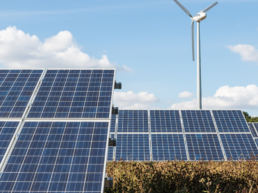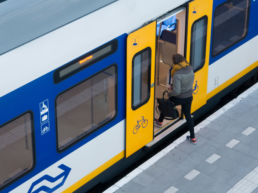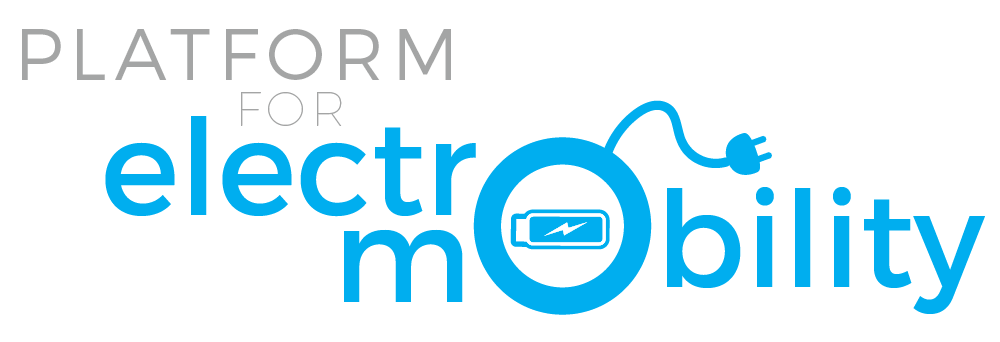Working Group
Six thematic Working Groups each chaired by a Platform members
Work programme is delivered through Working Groups. Any member may participate in any working group. Members are free to participate in all, in a party of the Working Groups. Working Group Leader, appointed by unanimity of WG memebrs, coordinate the activities.
WG Infrastructure
The WG will work on designed the best legislative framework for a sustainable, user- and grid-friendly network of public and private charging infrastructure. The main focus will be the Alternative Fuel Infrastructure Regulation and the Energy Performance of Building Directive. The WG is currently chaired by:

WG Logistics & buses
The main objective of the WG will be to influence the revision of the CO2 Standards for trucks and buses to be published by the European Commission at the end of 2022. The WG is also expecting to work on the Greening Freight Package once published. The WG is currently chaired by:

WG Supply Chain
The WG will aim at providing policy makers with regulatory solutions to ensure sustainability, via strong circularity models and economic viability of the value chain of electric mobility via a set of recommendations for the Critical Raw Materials Act, the Circular Car Initiative, Battery Regulations... The WG is currently chaired by:
WG Energy
The WG will develop policy solutions and sensibilization to the opportunities of transport electrification for the deployment of renewable energy sources via smart charging solutions and responsible data management system. The Renewable Energy Directive as well as solutions proposed in REPowerEU and In-vehicle generated data directive will be on the agenda. The WG is chaired by:
WG Fleet
The WG will advise the European Commission on delivering the legislation to mandate the decarbonization of public and private fleet as voted by the European Parliament in the CO2 Standards for cars and vans and in REPowerEU. In the longer term, reflections will lay on the electrification of circulating fleet. The WG is currently chaired by:

WG EU Industrial Strategy
The WG is developing a series of recommendation to deliver the Green Deal in a sustainable, secure, autonomous way. Four pillars constitute the scope fo the WG: international trade, human resources, state aids, and strategic investments. The WG is currently chaired the European Climate Foundation and:

Encouraging sustainable materials to supply electro-mobility
Sustainable Products Initiative
Encouraging sustainable materials to supply electromobility
With the de facto ban on sale of ICE vehicles voted earlier this year, the argument on switching vehicles to zero emission has won in Europe. There is widespread agreement and more importantly concrete policies and targets at the EU and Member State level setting the trajectories for this to happen.
However, for the EU to continue leading the way internationally, to ensure industry produces electric vehicles and supporting infrastructure (passenger cars but also heavy-duty vehicles, collective transport modes and upcoming innovative modes) that both enable the green transition and set the foundation for resilience in an uncertain future, a more holistic approach to sustainable transport and resource flows must be adopted. This should be done by incorporating in the zero-emissions tailpipe approach, another approach with circularity and other planetary boundary impacts from transportation life cycles.
With the Sustainable Product Initiative, the European Commission (EC) gave co-legislators the opportunity to reward more sustainable behaviours in manufacturing by linking incentives to sustainability of materials. The Parliament and the Council must therefore take the opportunity to put in place a supportive framework that incentivises future improvement of EV design and promotes circular value chains.
Innovations in battery technology and manufacturing as well as opportunities to reuse and recycle batteries and other high-value and impact components of electric vehicles (EVs) are already projected to significantly reduce greenhouse gas emissions over the lifetime of an electric vehicle: Transport & Environment have analysed EV life cycle CO2 emissions, finding that, on average, EVs are already three times cleaner than an ICE equivalent.[1] But while all vehicles on European roads will be zero emission, the policy framework will need to incentivise further innovations and improvements in recovery, recycling and re-using components and secondary raw materials.
To reach Europe’s 2050 climate objectives, it is necessary that all vehicles on the road are zero emission. But in addition, continuous improvement in sustainability beyond CO2 (reduction and prevention of impact to water use, biodiversity and other planetary boundaries from the materials chosen and processes undertaken) of vehicles is also vital. European legislation should therefore endeavour to support:
- Innovations in materials, manufacturing and processes that improve both products and production processes sustainability.
- Research and innovation in industrially co-generated materials, e.g., industrial by-products and residues, and materials generated from secondary sources to mitigate the use of natural resources and avoid unnecessary landfilling).
- Advancement in the uptake of sustainably superior materials, e.g., recyclable composite materials and low- and carbon-neutral metals for vehicle body panels and parts.
We therefore call the EC to consider the following policy recommendations:
- Support the advancement of sustainable and circular products across the value chain, including investment into advanced ELV management focusing on harvesting parts for circulation, advanced disassembly for sorting and separation and recycling with the intention of closing resource loops within the EU.
- Focus on the precise sustainability performance of final products by providing a definition to differentiate the product from components and materials.
- Review the information requirements along the product supply chain between business-to-business (B2B) and business-to-consumers (B2C) products, components and materials.
- Pivot support schemes including incentives to take into account a lifecycle analysis (LCA) approach, going beyond just tailpipe emissions to include design, components, targets for low-carbon and carbon-neutral materials and production processes and systems for component and material value retention.
- Target incentives to the most sustainable vehicles – for example on the basis of their energy efficiency (km/kWh) and through life utilisation.
If the European Commission desires to continue to lead on sustainability and specifically circular economy topics we see the sustainable product initiative as a unique and well-timed opportunity to set the basis for significant advancement alongside Industry.
[1] T&E, ‘How Clean are Electric Cars?’, 2022.
Bidirectional charging : let's avoid double taxation for EV owners
Energy Taxation Directive
Ensuring fair taxtion for EV owners providing flexibility to the grid
By purchasing more and more electrified assets, which can produce, store, or send electricity to the grid, consumers are actively participating in the energy transition. In the transport sector, Electric Vehicles (EVs) is the mean to decarbonise the sector. However, more than mere transport assets, EVs can become energy assets, ‘battery on wheels’, if they unleash their flexibility, providing benefits to the consumers and to the grid.
How? With smart and bidirectional charging. Smart charging goes in one direction and enables adjustment to the charging process depending on external signals. Bidirectional charging – also known as V2X (‘vehicle-to-everything’) goes a step further and allows the vehicle to exchange energy with the connected asset (grid, home, building) in both directions, as well as charging or discharging for as long as it is plugged in. This means that the vehicle can offer services for a longer timeframe, as unidirectional charging stops once the battery is full.
One barrier which deter the uptake of bidirectional charging schemes and similar flexibility services in the Member States is the possibility of double taxation in the current version and under the proposed revision of the Energy Taxation Directive (ETD). On the EV owner side, such double taxation disincentivises the use of bidirectional charging because it costs the driver twice as much to essentially not use the energy that is back-fed to the grid. It also hampers the development of prosumer business models supporting the active contribution of consumers in providing flexibility services to the system. On the energy supplier side, this creates unnecessary administrative burden.
Thanks to bidirectional charging capabilities, the electricity can flow between the EV battery and the grid multiple times between the moment the EV is plugged and the one when the electricity is consumed for driving. Having to track the amount of energy transferred and calculate the tax on each transaction must be avoided to prevent hindering V2G services: taxes and tariffs should be applied exclusively on the amount of energy actually exploited by the final user, by means of proper metering.
We therefore propose the following change to the current ETD proposal, to ensure these ambiguities are addressed directly in the legislation:
Proposed amendment:
Art. 22.4: …For the purposes of the first subparagraph, electricity storage facilities and transformers of electricity may be considered as redistributors when they supply electricity. Active customers (as defined in Directive (EU) 2019/944 Art. 2(8)), including electric vehicle or battery owners participating in bidirectional charging schemes and other customers providing flexibility services to the grid, shall be exempt from taxation on unused energy which they reinject into the grid.
Current proposal text:
Art. 22.4: …For the purposes of the first subparagraph, electricity storage facilities and transformers of electricity may be considered as redistributors when they supply electricity.
Our Contribution for an e-mobility friendly taxonomy
EU TaxonomyRecommendations for an e-mobility friendly Taxonomy
The members of the Platform for electromobility, which brings together more than 40 members from across all transport modes, are fully committed to promote sustainable mobility solutions and contribute to the on-going European green transition.
The Platform welcomes the EU’s initiative to establish a European Taxonomy to classify economic activities and direct public and private funding towards sustainable investments. This will be essential to achieve the ambitious climate targets of 2030 and 2050 set by the European Green Deal and the Sustainable and Smart Mobility Strategy . As transport is responsible for 27% of emissions at EU level, the European Taxonomy will play a key role in informing investors on sustainable transport activities and guiding decisions towards green investments.
Following the first reporting exercise of 2022 and the Commission’s intention to focus on the “usability” of the published Taxonomy delegated acts, the Platform would like to relay a number of observations commonly shared by its members representing the whole electromobility value chain.
- Some of the key players in the e-mobility value chain, such as the main suppliers, do not necessarily have all their economic activities covered by the taxonomy categories included in the climate delegated act, despite their significant contribution to the manufacturing of more sustainable products (BEVs, trains, etc.). This is mainly due to the fact that the taxonomy categories mainly focus on the activities of the OEMs and not necessarily on the activities of upstream suppliers[1].
- The Platform’s proposal would be to allow suppliers and subcontractors to disclose their activities in the same category as the corresponding OEM activity, particularly where these upstream activities supply single purpose technologies to be used exclusively in taxonomy-aligned assets. This would better reflect their real contribution to sustainable products, while encouraging sustainable financing of the entire electromobility value chain segments
Most of the transport activities are largely covered by the first Climate Delegated Act. Therefore, a number of companies are already preparing to report on the Taxonomy-alignment from 2023. In order to carry out this exercise, the Platform would welcome clarification on the interpretation of the Do No Significant Harm principle (DNSH) criteria on pollution and in particular on the use of substances (listed in Appendix C). These raise usability concerns, because of the difference in scope of the pieces of legislation referred to in Appendix C (notably REACH and RoHS) and the requirements of that appendix. In particular, the concept of essential use not defined in EU legislation may lead to differences in appreciations by economic operators. As a result, the information available to taxonomy users may be lacking.
- In order to avoid difficulties in proving alignment with the DNSH criteria and differences in the implementation thereof, the Platform calls for the Commission to ensure that the information gap is bridged.
- A number of delegated acts and derived documents (e.g. FAQs,) were published well after the adoption of the taxonomy regulation, even though the first eligibility reporting exercise for activities covered by the climate delegated act was required in 2022.
- The Electromobility Platform requests the stakeholders to be given appropriate time to prepare for the reporting and to have all the necessary clarifications and interpretations to fully implement all three sets of alignment criteria (substantial contribution, DNSH and minimum safeguards).
- The EC considers that the largest part of investments to complete the Trans-European Transport Network (TEN-T) is estimated to originate from public funding (national public funds, EU funds) and would amount to €244.2 billion over 2021-2050. However, to complete the core infrastructure of the TEN-T for all modes of transport, €750 billion between 2016 and 2030[2] is required. Considering the public funding contribution will cover only a limited part, a massive private investment injection will still be needed to complete the TEN-T infrastructure and achieve decarbonization objectives in the coming years.
- The Platform’s calls the European Commission to ensure a full taxonomy eligibility of electromobility members’ economic activities in order to preserve the future required investments for the e-mobility sector.
All these elements should be taken into account when amending the existing delegated acts and adopting future delegated acts & FAQs. In particular, these considerations should enhance the positive signal of the Taxonomy for electromobility technologies, which will contribute to decarbonising transport, at a time when the Green Deal objectives need more than ever to be accompanied by a coherent Taxonomy framework to finance the transition.
[1] Sometimes the NACE codes included in the Climate Delegated Act appear to be not entirely exhaustive and sometimes even misleading. [2] According to the latest Core Network Corridor Work Plans,
The added-value of electricity for mobility
The added-value of electric mobility
Platform for electromobility Statement on the Plenary vote on AFIR
As the AFIR prepares a solid legislative basis for the decarbonisation of transport in the next years, it is important to support only clean solutions and to refuse the usage of fossil fuels. An increasing penetration of e-mobility also implies a demand-reduction for fossil-fuel, that are mostly imported from instable regions, and thus higher security of supply. The European Union should be very cautious with the list of alternative fuels. Fossil fuels cannot be alternative fuels and must remain transitional with a concrete specification of their end date.
Thus, electric mobility is the most satisfactory option and should be supported in the AFIR by a strong set of targets for charging infrastructure. Here are the 4 main reasons:
Ensure energy efficiency
BEVs are the cleanest and most efficient types of powertrains for individual vehicles (T&E, 2022). Electric cars for road transport are far more energy efficient (85-90% efficient) than ICE cars (17-21%). Regarding natural gas for vehicles (NGV), 30m3 of natural gas, converted to electricity, yields 735km in an EV but 580 km in an NGV vehicle (MIT, 2010). In terms of the rail sector, it accounts for just 2% of total EU energy consumption in transport (Commission, 2021), being the most energy efficient transport mode (T&E, 2022).


Improve air quality
Road transport is a major source of air pollution in European cities. In 2019, 307,000 premature deaths were attributed to chronic exposure to fine particulate matter (PM). 40,400 premature deaths were attributed to NO2 exposure (European Energy Agency, 2021). In comparison to other technologies, electric vehicles produce no exhaust emissions. EVs are estimated to emit 20% less PM10 from non-exhaust sources per kilometre than internal combustion engine vehicles (ICEVs) (OECD, 2020) . Modal shift and the use of urban electric rail can improve air quality. In Europe, the rail sector’s share of total Nitrogen Oxide (NOx) and PM emissions of transport is respectively 3% and 4,5% (UCI, 2018).
Integrate renewable energy into the grid
Battery-on-wheel solutions, like bidirectional charging, can facilitate the integration of renewable energy to the electricity system. The combination of EVs, their batteries and smart charging functionalities as sources of ancillary services for the electricity grid will clearly bring benefits in terms of RES (Renewable Energy Sources) integration.


Reach climate neutrality
Electric cars and trains are the only available technology to reach climate neutrality. Full life cycle emissions of electric cars in Europe emit, on average, more than three times less CO2 than equivalent fossil fuel cars (Transport & Environment, 2022). Rail accounts for less than 0,4% of transport related greenhouse gas emissions in the EU (Commission, 2021).
"A Contresens" documentary in the European Parliament - Replay
A documentary separating the facts from the fiction about electromobility!
Live-streamed from the European Parliament on 7th September - 18:00
Zero-emission vehicles has been a huge topic on our agendas recently, and by 2035, these kind of vehicles will be one of our main means of transport. But do we really know what is inside electric cars and how do the supply chains really work?
To help policy makers better understand these questions, the documentary: “A CONTRESENS: electric vehicles, the great intox” (in French with English subtitles) will be proposed to MEPs on 7 September 2022 at 18:00 in the European Parliament.
We are pleased to inform you that the event will be live-streamed for external stakeholders so you can view the documentary and subsequent debate between MEPs and the movie makers Jonas Schneiter and Zelda Chauvet.
The documentary reveals the quest of two citizens in search of truth and coherence regarding zero-emission mobility. To separate the facts from fiction, engineer Marc Muller and journalist Jonas Schneiter set out to investigate what is behind electric vehicles. For two years, they went into the field to verify and/or challenge stereotypes. The findings of this investigation are summarised in the documentary film “A Contresens”.
For any question please contact: event@platformelectromobility.eu
Our Position Paper on the revision of the HDV CO2 emission standards
CO2 Standards for HDV
Our position ahead of Commission's proposal
The Platform for Electromobility strongly welcomes the revision of the CO2 standards for heavy-duty vehicles (HDV). The Platform sees the Regulation as a fundamental tool for electrifying trucks and thus advancing the zero emission transition within the road freight sector. Currently, this sector is responsible for 24% of the EU’s transport emissions, with trucks making up the largest part. The revision of HDV CO2 standards should align the CO2 targets for the sector with those of the EU’s overall 55% GHG reduction target in 2030 and the climate neutrality target of 2050.
In order to transition the road freight sector to zero emissions, more ambitious standards are needed to set the correct pace and a clear trajectory for manufacturers, logistics operators and for the supply chains in the electromobility and automotive industry. Scaling effects in production and technology development in the e-mobility and transport sector all contribute to making electric HDVs more competitive and widespread.
The Platform calls upon the European Commission to adopt the following recommendations as part of the revision of the HDV CO2 standards:
Strengthening the emission reduction targets to fully decarbonize the sector by 2050.
- Almost all newly registered HDVs (including long-haul) should be 100% zero emission by 2035 at the latest, given the average lifespan of a truck of approximately 15 years.
- An exemption should be considered for some niche vocational vehicles (such as those operating in remote areas or of abnormal weight) with a 100% Zero Emission Vehicle (ZEV) target by 2040, due to their more complex operational requirements and usually significantly lower mileage, which postpones the year of cost parity for the total cost-of-ownership for those vocational vehicles.
- The introduction of an intermediary CO2 target in 2027 of 30% for medium and heavy lorries is necessary to accelerate the transition to electric trucks during the 2020s.
- Strengthening the ambition of the 2030 CO2 target is crucial in providing momentum to, and further scaling up, the production and sales of ZETs. The 2030 target should be increased to an emission reduction level of at least 65%.
Extend the scope of the regulated HDV categories.
- Medium-sized lorries should be regulated through CO2 reduction targets, with the interim target of 30% in 2027 and the 2030 target of 65%.
- Small lorries – as well as urban buses and coaches – should have a mandated ZEV target, as they are not included in either the VECTO monitoring, or the datasets are deficient and hence have no CO2 reduction targets.
- The Platform recommends including small lorries with a ZEV target of 35% in 2027 and of 70% by 2030.
- Urban buses can decarbonise faster, and hence 100% of these should be ZEV by 2027. [1]
- Finally, coaches will transition a bit slower – due to the different vehicle design – with 20% ZEVs by 2027, 60% by 2030 and 100% by 2035.
- Trailers and semi-trailers will benefit from the introduction of energy efficiency targets, as this will unlock the deployment of zero-emission long-haul tractor-trailer combinations. The targets should be set where technically and practically feasible and as early as 2027. The full energy-efficiency potential of 12% for long-haul and 8% for regional delivery should be reached by 2030.
Other regulatory elements.
- The zero or low emissions vehicles (ZLEV) mechanism should be transformed into a ZEV-only mechanism with an enhanced benchmark of 15% by 2027. After 2030, the benchmark mechanism should be removed.
- The possibility of pooling of resources should be explored in the impact assessment, next to the introduction of a straight credit-trading scheme, which might allow for greater flexibility and less regulatory barriers.
- There should not be an exemption for small-volume manufacturers, as it risks creating a loophole for continuing to produce ICE-powered trucks.
- There should be no mechanism for renewable and low-carbon fuels to be included under this Regulation. Under such a mechanism, manufacturers could continue to produce ICE-powered trucks and delay the transition to ZEVs whilst not actually being able to control how fuels are ultimately being used (yet still being rewarded for it).
Ambitious charging infrastructure targets, as discussed in the Alternative Fuels Infrastructure Regulation (AFIR), are elementary for a successful rollout of ZETs. In addition, private as well as public investments will be needed to ensure higher grid capacity to serve the growing truck-charging demand. The revenues from excess emission premiums should be channelled back into the sector for the rollout of the infrastructure network. Related files, such as the Energy Performance of Buildings Directive (EPBD) can act an enabler for a smooth deployment of electric trucks. The platform therefore recommends including infrastructure requirements for charging at depots and logistic hubs.
Investing in the reskilling of workers is essential, both for those currently employed in HDV manufacturing and therefore see a conversion of current skills, and new ones who will be increasingly specialised in the new production value-chain. It can reduce social risk and increase workforce resiliency. Other measures such as job-search assistance for jobseekers and income and early retirement support could make the transition more just and fair.
The positive effects of electrifying heavy trucks are far-reaching, and go beyond reducing Europe’s GHG emissions; accelerating the zero-emission truck roll out also allows for drastic improvements to noise and air pollution. The high increase of energy efficiency in the case of battery-electric trucks is particularly beneficial when road transport accounts for 29% of the EU’s final energy consumption. The Platform for Electromobility also wishes to highlight that the transition to electric trucks and buses provides a considerable opportunity for the European e-mobility value chain and the competitiveness of the economy. Ambitious targets would make Europe a leader in zero emission HDVs and thus accelerate the unlocking of the potential of the e-mobility value chain.
[1] UITP is currently still considering its alignment with this objective.
Statement on EP ITRE Committee on RED ahead of Plenary vote
Renewable Energy Directive
Our statement ahead of Plenary vote
The Platform for electromobility is pleased to see the progress established by EP ITRE Committee on the recast Renewable Energy Directive (RED). This revision represents an unmissable opportunity to achieve two strongly related public policy objectives: accelerate the transport sector’s transition towards zero emissions and modernize the current legislative framework for renewable energy as a whole, and more specifically for Europe’s transport system.
With the European Parliament scheduled to formalize its position on the file in mid-September, the Platform would like to shed the light on some elements that could improve the EP’s position:
-
Include private charging in fuel neutral credit trading mechanisms
The Commission’s proposed EU-wide requirement for Member States to set up a fuel neutral credit trading mechanisms is highly welcome. However, the mandated credit system, as established by art 25(2), should not, as it would as the text stands, limit the scope of this new system to public charging points only. Any charging points should be allowed for inclusion under national credit mechanisms. Limiting the scope of the credit mechanism at EU level to public recharging stations will lead to inefficiencies and distortions, and affect the deployment of charging infrastructure. The ITRE Committee has gone in the right direction, leaving the option for Member States to set up their system in the way they see best fit, including a voluntary inclusion of private charging.
Given that the vast majority of EVs in the EU (>70%) will be charged at home or at the workplace, the Platform believes a stronger wording is needed, namely expressly including private recharging stations in the mechanism.
-
Ensure appropriate energy efficiency ratios regardless of accounting methodology
The current RED allows countries to choose between setting transport targets based on energy volumes/content or GHG emission reductions. Contrarily, both the Commission’s proposal and the ITRE Committee Report call Member States to set targets based on GHG reductions only, in clear countertrend compared with the 24 out of 27 Member States currently using an energy-based system. With this new proposed accounting methodology comes the deletion of the existing “multiplier system” or ‘Energy Efficiency Ratio (EER)’. The multiplier or EER accounts for the superior energy efficiency of renewable electricity, and is currently set at 4 for electricity. The mandate for the new transport targets does contain an “implicit” EER, i.e. a different fossil fuel baseline.
Nonetheless, as Member States are expected to push for maintaining the flexibility to choose between GHG- or energy-based targets, it is crucial to maintain an Energy Efficiency Ratio (EER) of at least 4 regardless of the accounting methodology used (in case a member states chose to keep an energy-based system or the current proposed implicit multiplier in case of GHG emission reductions system), reflecting the fact that EVs are between 4-5 times more efficient than internal combustion engine cars (“well to wheel” efficiency) powered by any renewable fuels.
Hence, the Platform believes that, while it would be welcomed to maintain flexibility for countries to choose their accounting system, appropriate EERs should be kept ensuring that direct electrification is able to compete on a level playing field.
[Video] Batteries are well placed to help Europe navigate the current energy crisis
Batteries Regulation
Europe's main asset toward energy security
Batteries are necessary to fast forward electromobility, they store green energy, and can ensure critical infrastructure runs smoothly. In other words, batteries are critical to achieving the EU Green Deal objectives, and for the transition to renewables and electrification.
But the battery industry needs a fit for purpose policy framework to do so. In December 2020 the European Commission, proposed the new Batteries Regulation which is now being negotiated in trilogue.
It is key that the new Regulation enables a sustainable and competitive batteries value chain on our continent. The Regulation needs to introduce regulatory visibility for all players along the value chain on key aspects, including:
First, well-thought through timelines that would balance the need for a quick implementation of the Regulation, whilst ensuring robust methodologies are developed.
Second, future potential restrictions of substances must take into consideration the impact onachieving strategic autonomy for the EU battery sector, the performance of EV batteries, and the closed loop of the substances needed for batteries.
And finally, correct definitions: of batteries as final products, and of the battery producer for Extended Producer Responsibility coherence. This will help establish a level playing field within and outside of the European Union.
We salute the Czech Presidency’s emphasis on promoting the EU energy security amid these uncertain times, and want to stress that batteries are naturally well placed to help Europe navigate the current energy crisis. We call for the Presidency to focus its attention on the Batteries Regulation
